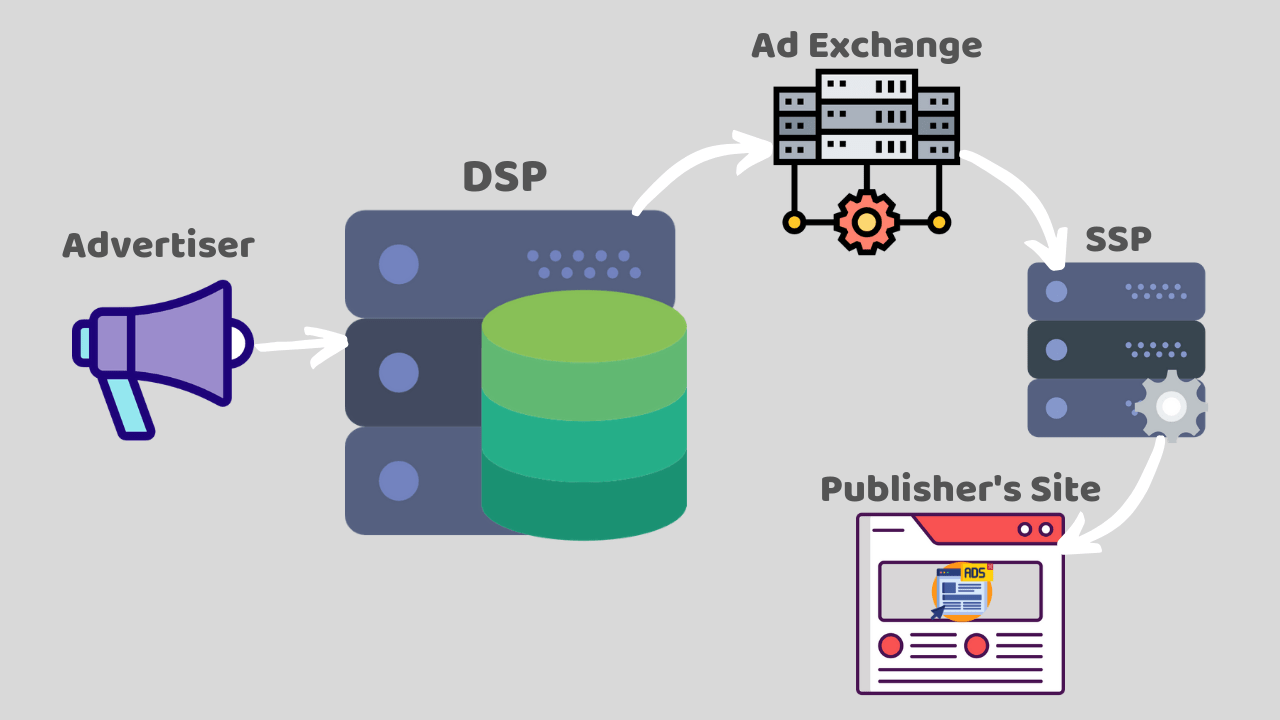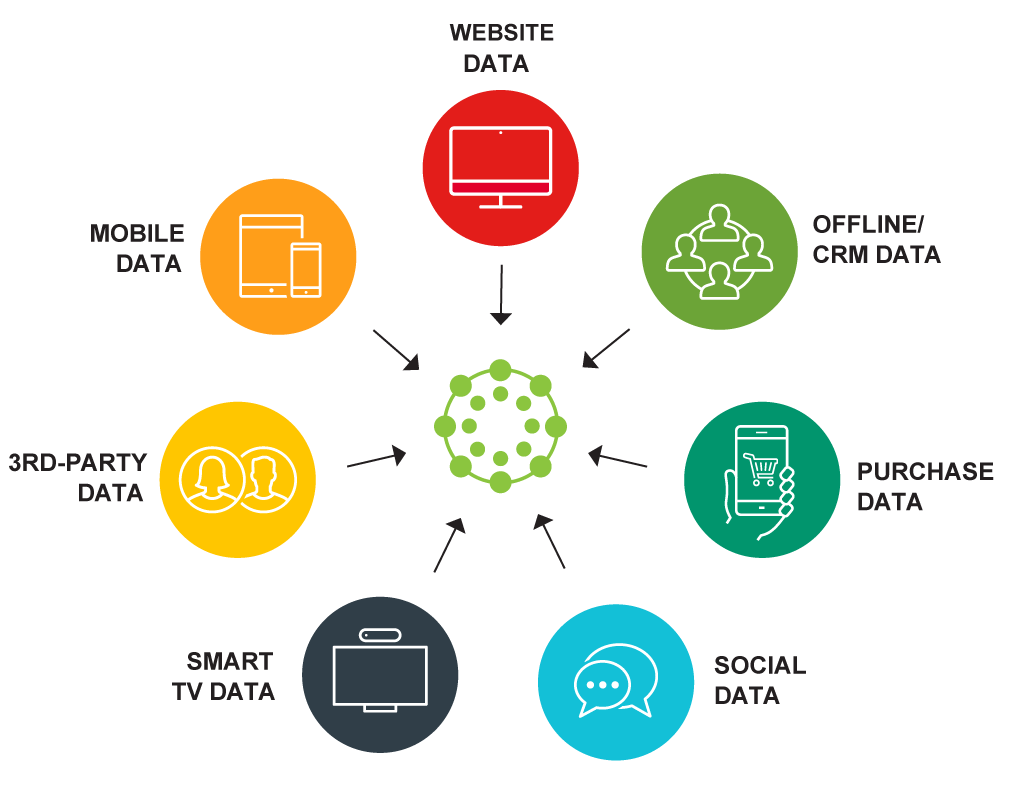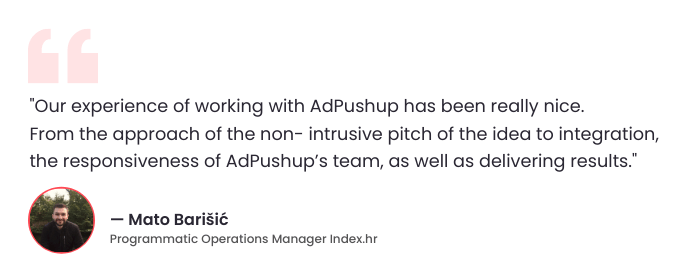Learn the difference between DSP and DMP, their use in the programmatic supply chain, and the new hybrid offerings that combine both.
DSP vs DMP has become a common search term for both the buy and sell side. Gone are the days when advertisers could call publishers and a deal was created by word of mouth. Most publishers and advertisers have now embraced programmatic advertising because it automates the process and helps them earn in real-time.
But automated technology brings the need for the use of various tools and techniques to better organize campaigns. Demand-side platforms (DSP) and data management platforms (DMP) are two such technologies that all members of the digital advertising ecosystem must be aware of.
In this post, we cover demand side platforms, data management platforms, and the difference between the two.
Also Read – Detailed Explanation of Demand-Side Platform (DSP)
Before we get into DSP vs DMP, let’s understand what they both are and how they work.
What Is a Demand-side Platform?
A demand-side platform (DSP) helps advertisers and buyers in managing demand during a the real-time auction.

DSPs help advertisers in buying relevant inventory from the marketplace. They also help advertisers in staying abreast of upcoming auctions. Basically, demand-side platforms do exactly like supply-side platforms do for publishers. They help make advertisers’ work easy and efficient, thus helping them bag better deals.
Its adoption has been increasing every now and then. According to MarketWatch,
The market for Demand Side Platform (DSP) software is currently valued in the multimillions of USD in 2023 and is projected to experience significant growth, with estimations to reach multimillions of USD by the close of 2029.
Advertisers need DSPs because they minimize some of the obvious flaws of traditional one-on-one deals such as:
- Time-intensive process
- Negotiation efforts
- Limited audience reach
- High cost of advertising, etc.
How does a DSP Work?
The real-time bidding process occurs in under a second but DSPs do a lot within this split second. It starts with a user visiting a publisher’s website. Advertisers have a campaign ready that targets a particular set of users.

For example, the campaign involves users between 20-30 years of age who are planning on studying abroad. Once a DSP understands the campaign instructions, it starts contacting multiple ad exchanges for a target user. Once a user appears, the SSPs provide the ad exchange with the user data and if it matches the campaign requirement, an auction is carried out with DSPs making a bid according to price floors set by the publisher. And that’s how an ad is displayed, helping both publishers and advertisers earn.
Some of the best DSPs available in the market are MediaMath, Amazon Advertising Platform, LiveRamp, etc.
What Is a Data Management Platform?
Online advertising thrives on data, and rightly so. It is estimated that people are generating 2.5 quintillion bytes of data every single day. With such a massive amount of data being generated, publishers and advertisers are constantly looking for ways to assemble, store, and analyze this data. This has become increasingly relevant in current times when third-party cookies are dying a slow death.

Data management platforms help publishers in managing, organize, store, and analyze data that they gain through first-party, second-party, and third-party sources. They help automate organizing and devising actionable insights from data, which is otherwise a time-intensive manual process.
DMPs help publishers in aggregating first and third-party data mainly for audience segmentation. This helps in selling their inventory better because getting a more relevant audience improves the targeting of ads.
Also Read – What is Data Management Platform? A Guide For Publishers

How Demand Side Platforms Work?
Here’s a quick brief of how data management platforms work.
First thing first, DMPs gather together the data, which is done with the integration with ad tech and mark tech platforms, which are SSPs, DSPs, ad exchanges, etc.
Next, DMPs add a tag, commonly an HTML pixel or a Javascript snippet to both the advertiser and publisher’s website.
And from that moment, a series of procedures take place in order to push the data.
However, behind their process, there are plenty of activities that are performed by the DSPs including:
– Data normalization and enrichment, which ensures data is organized into an appropriate format.
– Data Segmentation, where the entire data is analyzed to put it into different categories.
– Profile merging, which ensures all profiles with the same identifiers such as the same IDs are merged into a single profile.
– Audience creation, where people who are sharing similar identifiers are put into one category.
– Data Segmentation, which is the final step where audience segmentation gets into work.
In short, while DSPs are focused on ad buying and optimization, DMPs are focused on data collection and analysis. By working with each other, these tools help advertisers better understand and engage their target audience, leading to more effective advertising campaigns.
We hope by now you have had a fair understanding of the differences between these models.
Let’s now delve deeper and understand the integration of DSP and DMP in the programmatic ecosystem.
Also Read: Best Data Management Platforms: How Does the Future Look for DMPs
DSP vs DMP: Differences
DSPs and DMPs bear some similarities, which is where the comparison between them arises. However, both are used for completely different purposes, which we’ll clear now:
| Category | Demand-side platforms | Data management platforms |
| Used By | Advertisers and buy-side parties | Publishers, advertisers, and many other intermediate parties |
| Purpose | Only used for real-time bidding. | Used for gaining actionable insights through analysis of data, audience segmentation, omnichannel marketing, etc. |
| Data Collection | DSPs collect data from only advertising campaigns. Their data collection is very limited. | DMPs collect data from a variety of sources including CRMs, website forms, cookies, etc. There is unlimited scope for collecting data. |
| Data Privacy | Consumer data is not that well protected in a DSP as it can be further used for marketing campaigns for better reach. | Data is well protected in a DMP. Only the owner of the data can use it for audience segmentation and additional analysis. |
| Data Portability | DSPs have very limited data portability and mostly cannot transfer data to other platforms. | DMPs allow portability of data to other platforms such as SSPs, DSPs, etc. This happens because DMPs allow seamless integration with other platforms. |
Integration of DSP and DMP in Programmatic Ecosystem
The integration of the Demand-Side Platform (DSP) and Data Management Platform (DMP) is a critical component of the programmatic advertising ecosystem. Along with the Supply-Side Platform (SSP) and Ad Exchange, these tools work together to create effective and profitable campaigns.
Through the integration of the DSP and DMP, advertisers can launch sophisticated algorithms that help identify the best user and ad pairing. This process happens in real time, the moment a user visits a website.
By leveraging this powerful combination of tools, advertisers can create highly targeted campaigns that deliver results. With the ability to fine-tune and optimize campaigns based on real-time data, they can feel confident that their advertising efforts are making a meaningful impact.
When it comes to reaching customers effectively, it’s crucial to have the right data and tools at your disposal. That’s where the integration of the Data Management Platform (DMP) and Demand-Side Platform (DSP) can be so valuable.
By leveraging an integrated system that can receive data from a variety of sources, businesses can create highly targeted campaigns that speak directly to their customers’ interests and needs.
What is a DMP-DSP Hybrid?
As far as media buying is concerned, DSPs and DMPs bear some similarities. This is the reason why digital advertising vendors have started selling a DSP-DMP hybrid model, as opposed to standalone platforms.
To put it simply, a DSP-DMP hybrid has the combined capabilities of data management and media buying. This entity is powerful as it resolves the unnecessary requirement of investing in two different platforms.
It might seem like the obvious choice for members of programmatic advertising to invest in the hybrid but it has its own limitations. Let’s compare and see how the DSP-DMP hybrid fares as compared to DMPs and DSPs.
Also Read – What is a Supply-Side Platform? – AdPushup
DSP vs DMP vs DSP-DMP Hybrid Model
Now that we have thoroughly discussed DSP vs DMP, let’s now bring in the hybrid model in the same.
| Category | Demand-side platform | Data management platform | DSP-DMP Hybrid |
| Data security | Data is not that well secured because it could be used for other media campaigns. | Security is unmatched as data is well-protected. This is especially the case in white label DMPs in which the owner has the sole right over that data. | Security could be compromised because of vendors procure third-party data for their own use. |
| Data management and media buying | Can only offer media buying | Can only be used for data-related needs such as segmentation, storage, etc. | Offers both data management and media buying. |
It is also important to note that pricing is also an important factor while choosing either the DSP-DMP hybrid or the platforms individually. The hybrid is less expensive as compared to the standalone platforms.
You may also like to know: Ad Network vs DSP: What are the Key Differences
Conclusion
At the end, it all comes down to the use case of an organization before they purchase a technology like the DSP, DMP, or their hybrid. If the primary goal is only data collection and audience segmentation, then choose a DMP. If media buying is the only end goal, then pick a DSP. If the objectives are clear, the DSP vs DMP debate could settle for any organization.
FAQs – DSP vs DMP
Demand-side platforms (DSPs) allow advertisers to buy advertising through automation. DSPs are powerful marketing automation tools because they allow advertisers to buy high quality traffic at scale with minimal friction.
In general, DSPs are important for mobile marketing because they allow marketers to avoid spending time and energy on tasks that can be automated. In contrast to manually contacting hundreds of publishers, DSPs enable advertisers to set up campaigns quickly and manage them easily. To improve long-term performance, user acquisition experts can spend more time working on other valuable areas – such as user base segmentation.
Data management platforms are used primarily in advertising and marketing to build profiles of anonymous individuals, store summary data about each individual, and share their data with advertising systems.

Deepak has a keen eye for detail and a deep understanding of the ad tech landscape. Whether it’s through in-depth articles, thought-provoking insights, or compelling storytelling, he’s dedicated to helping people navigate the complex world of ad tech with the simplicity of his words.







